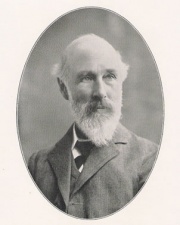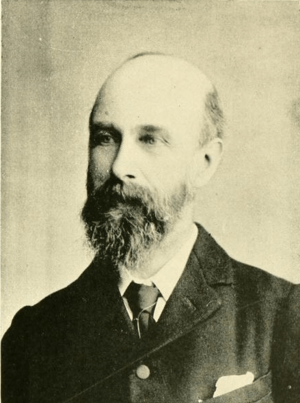William F. Barrett facts for kids
Quick facts for kids
William Fletcher Barrett
|
|
|---|---|
 |
|
| Born | 10 February 1844 Jamaica
|
| Died | 26 May 1925 (aged 81) |
Sir William Fletcher Barrett (born February 10, 1844, in Kingston, Jamaica – died May 26, 1925) was an English physicist. He was also very interested in mysterious things like mind reading and ghosts, a field called parapsychology.
Contents
Early Life and Education
William Fletcher Barrett was born in Jamaica. His father, William Garland Barrett, was a minister and loved studying nature. His family moved back to England in 1848. They settled in Royston, Hertfordshire. Later, in 1855, they moved to Manchester. William went to Old Trafford Grammar School there.
After school, William studied chemistry and physics. He went to the Royal College of Chemistry. He also worked as an assistant to a famous scientist, John Tyndall. This was at the Royal Institution from 1863 to 1866. Later, he taught science at the London International College. He also taught at the Royal School of Naval Architecture.
Scientific Discoveries
In 1873, William became a professor. He taught Experimental Physics at the Royal College of Science for Ireland. He made an important discovery called Stalloy. This is a special metal alloy used in electrical engineering. He also studied how flames react to sound.
William worked with other scientists on metals. He found out that nickel shrinks when it becomes magnetic. This discovery happened in 1882.
Later in his life, William developed cataracts. These are cloudy areas in the eye that affect vision. He then studied biology to understand eye problems. He even invented a machine called the entoptiscope. This machine helped him study the eye.
William was recognized for his work. He became a member of the Royal Society in 1899. This is a very important group for scientists. He was also a member of the Royal Society of Edinburgh. In 1912, he was made a knight. This means he was given the title "Sir." He married Florence Willey in 1916. William died in London in 1925.
Exploring Mysterious Phenomena
William became interested in the paranormal in the 1860s. This happened after he saw something called mesmerism. Mesmerism was a practice that seemed to put people into a trance. William thought he saw people transfer thoughts to each other.
By the 1870s, he was looking into poltergeists. These are strange events like objects moving on their own. In 1876, he wrote about his findings. He also wrote about his experiments with thought transference. These articles appeared in the journal Nature.
His writings caused some debate. Because of this, William decided to start a group. He wanted to find other people who shared his interests. In 1882, he helped create the Society for Psychical Research (SPR). This group studied unexplained events.
William was a Christian and believed in spiritualism. This is the belief that spirits of the dead can communicate with the living. He was very active in the SPR at first. In 1884, he helped start the American Society for Psychical Research. He even became president of the SPR in 1904.
Investigating Psychic Claims
William and other SPR members tested the Creery Sisters. These sisters claimed to have psychic abilities. However, the sisters later admitted they had cheated. They used secret codes to trick people. William and others had been fooled by them.
William believed in telepathy, or mind reading. He said that magicians who claimed to read minds were just using tricks. He called their acts "pseudo" (fake) thought reading.
William also helped publish a book called Gate of Remembrance (1918). This book was about strange discoveries at Glastonbury Abbey. William believed the claims in the book were true. However, many archaeologists and skeptics (people who doubt things) thought the claims were questionable.
In 1919, William wrote the introduction for a book. It was by a medium named Hester Dowden. A medium is someone who claims to talk to spirits.
Dowsing Research
William was very interested in divining rods. These are sticks or rods that some people use to find water or other things underground. He wrote two articles about dowsing in 1897 and 1900. He also wrote a book about it called The Divining-Rod (1926).
William thought that the movement of the dowsing rod was due to something called the ideomotor response. This means the dowser's own unconscious movements cause the rod to move. But he also thought that sometimes a dowser's unconscious mind might pick up information through clairvoyance. Clairvoyance is the ability to know things without using the normal senses.


